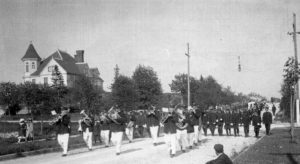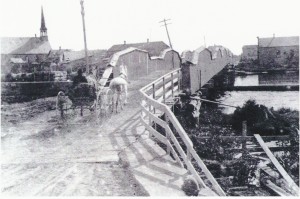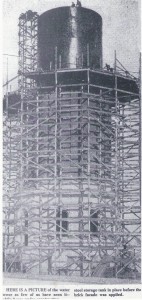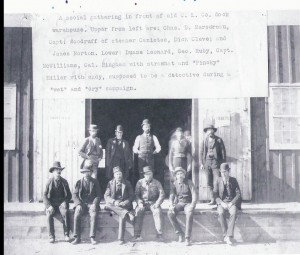Memorial Day, originally called Decoration Day, is a day of remembrance for those who have died in our nation’s service. Memorial Day was officially proclaimed on 5 May 1868 by General John Logan, national commander of the Grand Army of the Republic, in his General Order No. 11, and was first observed on 30 May 1868, when flowers were placed on the graves of Union and Confederate soldiers at Arlington National Cemetery.
The above picture shows early Memorial Day parades in Manistique. The parades featured not only veterans from foreign wars but also the Civil War. Several bands were part of the parades along with the Woman’s Relief Corps, Red Cross, Catholic Benevolent Association, and Daughters of Veterans. Schoolchildren marched in formation with their teachers along with the 200-member Garden Club.




